نومبر ۱۲, ۲۰۲۱

KUL Photo Files
گلاسگو میں جاری COP26 میں ماحولیاتی موافقت اور ابھرنے کی قوت اہم موضوع ہے مستقبل میں گرمی کی شدت اور رفتار سے قطع نظرموافقت کے کچھ اقدامات ضروری ہونگے۔ ترقی پذیر اور کمزور ممالک کی مالی مدد موسمیاتی تبدیلیوں سے نمٹنے کے لیے ترقی یافتہ دنیا کے عزم کا ایک اہم اور بنیادی جزو ہے۔
جنوری ۱۶, ۲۰۲۱

KUL Photo Files
بارہا دیکھا گیا کہ شہر کراچی میں نالوں کی صفائی کا عمل شروع ہوا مگر پایہء تکمیل تک نہ پہنچ سکا۔اسکی دو بنیادی وجوہات ہیں ایک یہ کہ جو صفائی کا عمل شروع ہوتا ہے وہ صرف سال میں ایک سے دو بار ہوا کرتا ہے بالخصوص مون سون کی بارشوں سے قبل یا بعد میں جب انتظامیہ متحرک نظر آتی ہے ورنہ سارا سال وہ خواب غفلت میں رہتے ہیں
جنوری ۱, ۲۰۲۱

KUL Photo Files
مردم شماری کسی بھی ملک یا شہر میں ہر قسم کی منصوبہ بندی کے لیے انتہائی اہمیت کی حامل ہے لیکن افسوسناک امر یہ ہے کہ ہم اسے قابل توجہ نہیں گردانتے- دنیا بھر میں ماہرین شہری منصوبہ بندی اپنے شہروں کی سماجی، معاشی اور آبادیاتی صورتحال کو سمجھنے کے لئے مردم شماری کے اعداد و شمار کا استعمال کرتے ہیں اور اسکی بنیاد پر مختلف تجزیے کرتے ہیں پھر منصوبہ سازی کے وقت اس کے مطابق فیصلے کئے جاتے ہیں۔
مئی ۲۶ ,۲۰۲۰

KUL Photo Files
وبائی امراض نے ہمیشہ شہروں کو نئی شکل دی ہے- شہروں کی منصوبہ بندی میں مروجہ ثقافتی اور تکنیکی رجحانات کے ساتھ ساتھ بڑے بحرانوں کا بھی کردار رہا ہے۔چاہے 430 قبل مسیح میں يونان کے شہر ایتھن سے پھیلنے والی طاعون کی بیماری ہو جس سے ایتھنز کے معاشرے پر سنگین اثرات مرتب ہوئےاور شہر کے قوانین اور شناخت میں گہری تبدیلیاں آئیں یا افریقہ میں ایبولا کی وبا کا سلسلہ ہو جس نے آج کے شہروں کے بڑھتے باہمی روابط کو واضح کیا- کوئی شہر ایسا نہیں جس پر ان بحرانوں نے اپنا نشان نہ چھوڑا ہو۔19 ویں صدی میں ہیضے کی وبا نے شہری صحت و صفا اور نکاسی آب کے نئےاور جدید نظام کو متعارف کرایا۔ جسے اس وقت کا قابل ذکر کارنامہ قرار دیا گیا جو گندے پانی کو محفوظ طریقے سے نیچے جانے اور پینےکے پانی کی فراہمی سے دور رکھنے کے لئے ڈیزائن کیا گیا تھا ۔
مئی ۱۶،۲۰۲۰
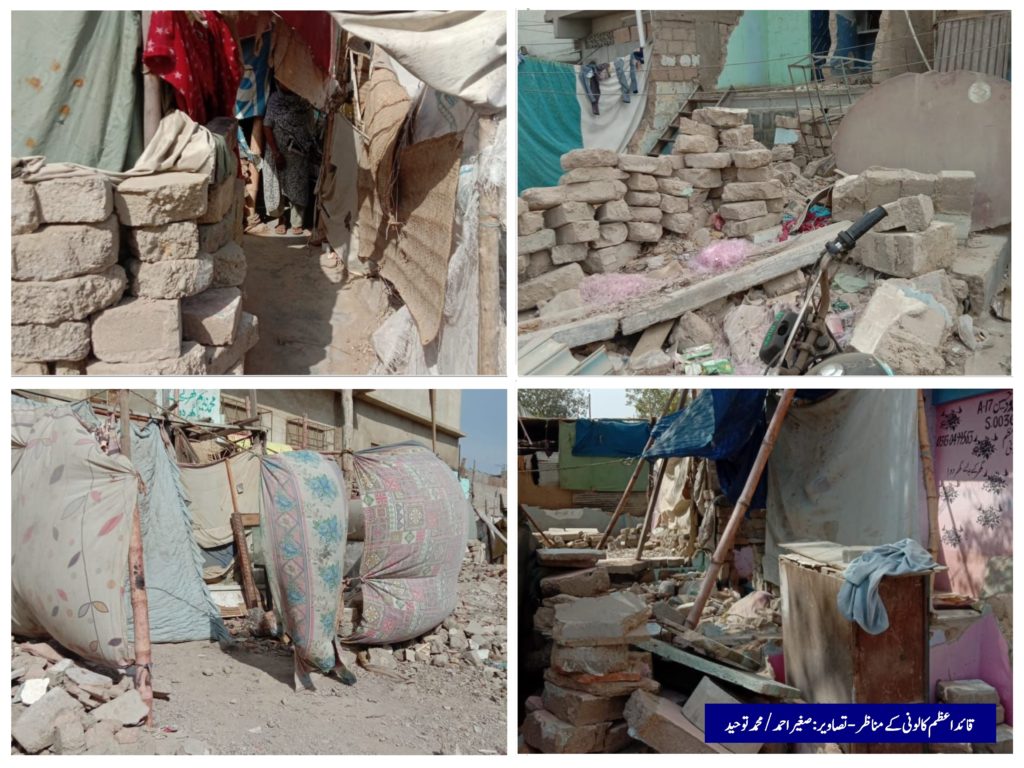
KUL Photo Files
کراچی سرکلر ریلوے سے ملحقہ کچی آبادیاں کراچی کے لئے نئی نہیں، حقیقت یہ ہے کہ یہ آبادیاں پچاس سال سے زیادہ عرصے سے موجود ہیں اور رہائشیوں کی تیسری نسل ان مکانات میں مقیم ہے۔ 1980 کی دہائی میں جب کراچی سرکلر ریلوے چلا کرتی تھی تو یہ آبادیاں اسی طرح موجود تھیں، 1999 میں جب کراچی سرکلر ریلوے کو بند کر دیا گیا تو بھی یہ آبادیاں اسی طرح موجود تھیں۔ جب یہ آبادیاں اپنی اس حد سے آگے نہیں بڑھیں تو کراچی سرکلر ریلوے کی بحالی میں رکاوٹ کیسے قرار دی جا سکتی ہیں؟ بے دخلی اور بے گھر ہونے کا یہ خطرہ چند دنوں یا مہینوں پر نہیں بلکہ سالوں پر محیط ہے اور اس کے ساتھ میں ان رہائشیوں کی اپنے گھروں کو بچانے کی 17 سالہ جدوجہد بھی شامل ہے۔
April 14, 2020

KUL Photo Files
As we brace ourselves for the Covid-19 epidemic in Pakistan, we are being told to wash our hands and self-isolate. What if you are unable to do any of these things? According to the Census 2017, Pakistan's population is 207.8 million with an urban share of 75.6 million. The United Nations asserts that in 2015, 45.5% of Pakistan's urban population was living in informal settlements. Thus, an estimated 34 million people in Pakistan live in katchi abadis or urban informal settlements, where water is scarce for the most basic of needs.
April 14, 2020
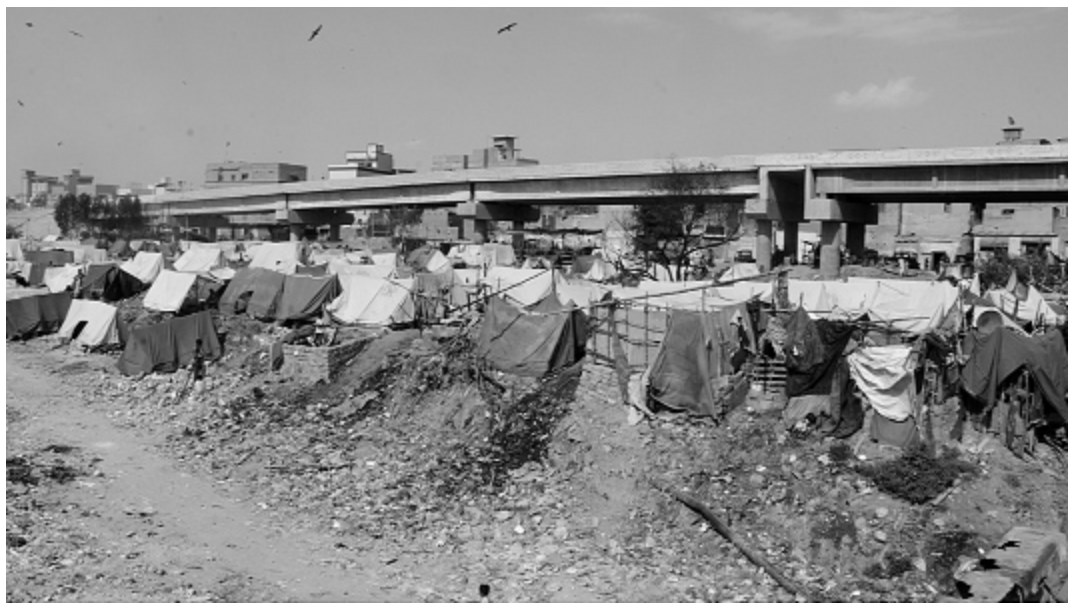
KUL Photo Files
When Ilyas Goth, a settlement of 150 to 200 jhuggies near Teen Hatti, was ablaze on the night of January 21, distressing videos of the entire area on fire went viral on the social media with people expressing grief, sympathy and horror. Some went as far as to call on the government to expedite help and rescue operations.
September 1, 2019
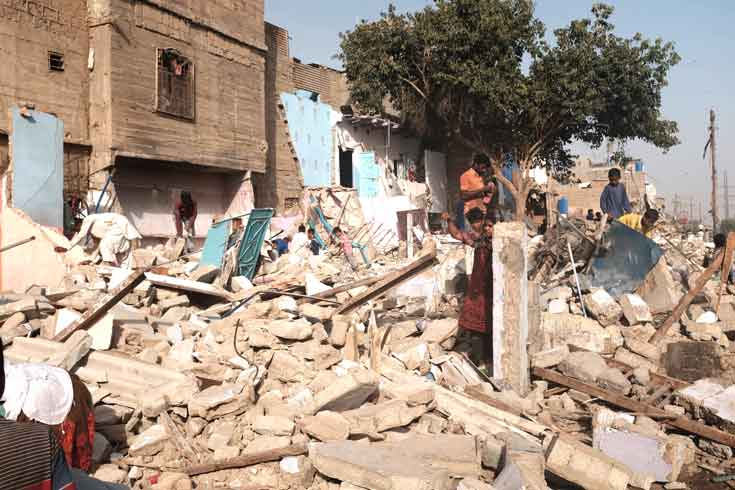
KUL Photo Files
Evictions as a form of structural violence have psychological and other health implications. In Ghareebabad, an informal settlement facing the threat of eviction in Karachi's District South, residents have repeatedly mentioned traumatic distress, anxiety, deteriorating health, and even death in extreme cases. These impacts are significantly greater for women and children
August 21, 2019

KUL Photo Files
For a vast majority of residents in Pakistan’s cities, the process of accessing and holding on to space for shelter and for work has become a struggle to endure in the face of profound uncertainty. I am referring here not only to the poor, but also to those residents who don’t fit into neat classifications of poor or middle-class; residents that some scholars have called the "in between".
May 29, 2019

KUL Photo Files
The woman in that house was stricken with grief as she watched her house being taken down. She fainted on the spot, went into a coma and a few days later, she died.
January 9, 2019
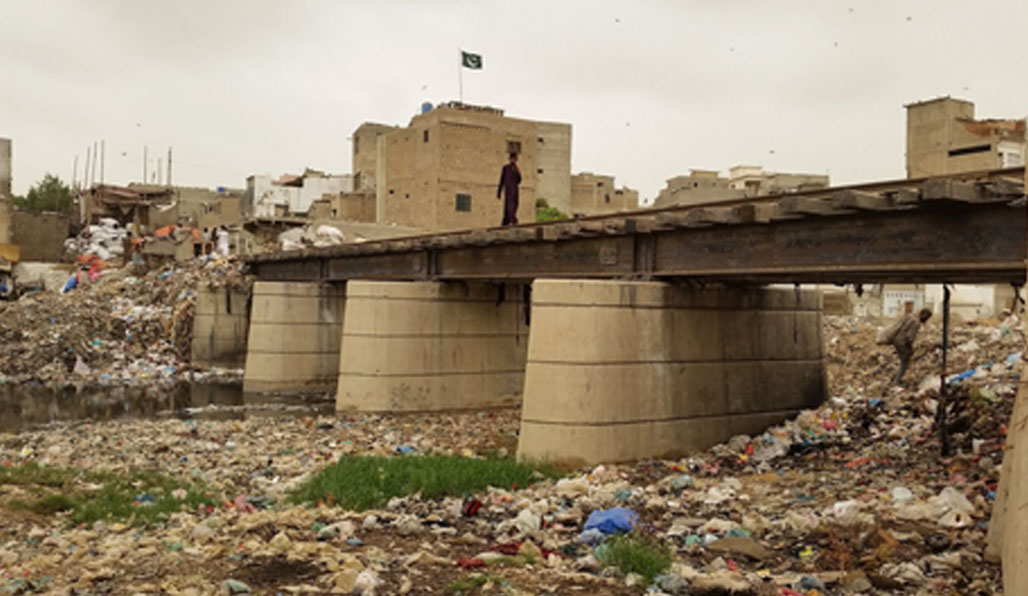
KUL Photo Files
Hidden within the narrow lanes of Moosa Colony, in UC-35 of North Nazimabad, Karachi, one can find the material ruins of the Karachi Circular Railway (KCR), faintly discernible in the sand covered tracks and a few isolated posts bearing numeric markings. The KCR’s golden era of the 1960s can be traced in Moosa Colony’s residents’ accounts; an era when the KCR represented a vanguard of modernity and embodied high aspirations for the city’s landscape of mobility.
November 14, 2018
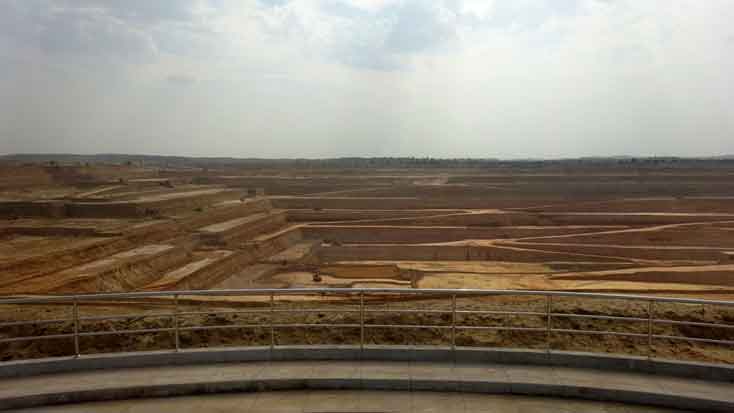
KUL Photo Files
While there are conflicting stories about coal mining’s impact on Thar, for activists the major problems concern land displacement, village resettlement and the long-term effect on the region’s ecology — especially the availability of water given climate change.